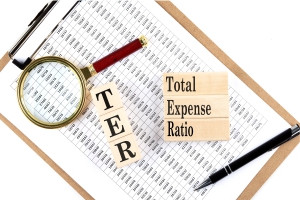
When you hire a wedding planner, you pay them a certain amount for all the work they do in organizing the event. From catering and flowers to invitations, lights, and more, their price covers all of these costs, as well as the costs of their services. Mutual fund schemes also charge a fee for the services they provide and the costs they incur. This is known as the total expense ratio.
If you are a mutual fund investor, you may have heard of expense ratios but are not exactly sure what they are or why they matter; this article can help break it down for you.
What is the total expense ratio of a mutual fund?
Mutual fund houses incur some expenses for managing your invested capital in the mutual fund scheme. The mutual fund expense ratio covers these operational expenses, including administration fees, investment management fees, sales, marketing, and advertisement costs, audit fees, brokerages, taxes, legal fees, and accountancy costs as per the provisions of the Securities and Exchange Board of India (SEBI) (Mutual Funds) Regulations, 1996.
How does the total expense ratio work?
The total expense ratio in mutual funds is charged annually. This cost is levied as a percentage of the fund's daily net assets and is borne by investors. The total mutual fund expense ratio of mutual fund schemes directly impacts the fund’s returns. When the expense ratio is high, your returns may be lower, and vice versa. Having said that, the expense ratio is not the only factor that affects your returns, and it is advised to pay equal attention to the fund’s portfolio, asset manager, investing style, etc.
Let's move on to how the expense ratio is calculated in a mutual fund scheme.
Total expense ratio formula and calculation
The total expenses ratio is expressed in a percentage. Here is the formula for the same:
Total expense ratio = (Total costs of the scheme during the period / Total assets of the fund) x 100
Since AMCs are regulated by SEBI, they have to adhere to certain limits under Regulation 52 of SEBI Mutual Fund Regulations when calculating their expense ratios.
Limitations of the total expense ratio
With effect from April 1, 2020, AMCs must follow the limits as mentioned below:
Assets Under Management (AUM) | Total expense ratio for equity funds | Total expense ratio for debt funds |
Up to Rs 500 crore | 2.25% | 2.00% |
On the next Rs 250 crore | 2.00% | 1.75% |
On the next Rs 1,250 crore | 1.75% | 1.50% |
On the next Rs 3,000 crore | 1.60% | 1.35% |
On the next Rs 5,000 crore | 1.50% | 1.25% |
On the next Rs. 40,000 crore | The total expense ratio is reduced by 0.05% for every increase of Rs 5,000 crores of daily net assets or part thereof. | The total expense ratio is reduced by 0.05% for every increase of Rs 5,000 crores of daily net assets or part thereof. |
Over Rs 50,000 crore | 1.05% | 0.80% |
You may have seen fund houses altering the expense ratios from time to time. Let’s see why this happens.
Why do mutual fund houses change the mutual fund expense ratio?
Mutual fund houses may change the expense ratio of a mutual fund for a variety of reasons, including the following:
- Changes in industry regulations:New regulations or changes to existing rules may affect the way mutual funds are required to calculate and disclose their expense ratios.
- Changes in the fund's operating expenses: If the fund incurs additional operational costs or its existing expenses change, its expense ratio may be adjusted accordingly.
- Changes in the fund's asset base:The expense ratio of a mutual fund is based on its average net assets, so if the fund's assets increase or decrease significantly, the expense ratio may be adjusted.
- Changes in the fund's investment strategy:If a mutual fund changes its investment strategy, it may incur additional expenses. As a result, the expense ratio may be changed.
The critical thing to note here is that AMCs are legally bound to disclose changes in the expense ratio to investors.
Conclusion
The total expense ratio is a critical component of mutual fund investments. However, you must look at all factors, like your goals, the AMC, the fund manager's experience, portfolio, etc., and not make investment decisions based on the expense ratio alone.
An investor education initiative by Edelweiss Mutual Fund
All Mutual Fund Investors have to go through a one-time KYC process. Investors should deal only with
Registered Mutual Fund (RMF). For more info on KYC, RMF and procedure to lodge/redress any
complaints, visit - https://www.edelweissmf.com/kyc-norms
MUTUAL FUND INVESTMENTS ARE SUBJECT TO MARKET RISKS. READ ALL SCHEME-RELATED DOCUMENTS CAREFULLY
Trending Articles
MUTUAL FUND INVESTMENTS ARE SUBJECT TO MARKET RISKS, READ ALL SCHEME RELATED DOCUMENTS CAREFULLY.















